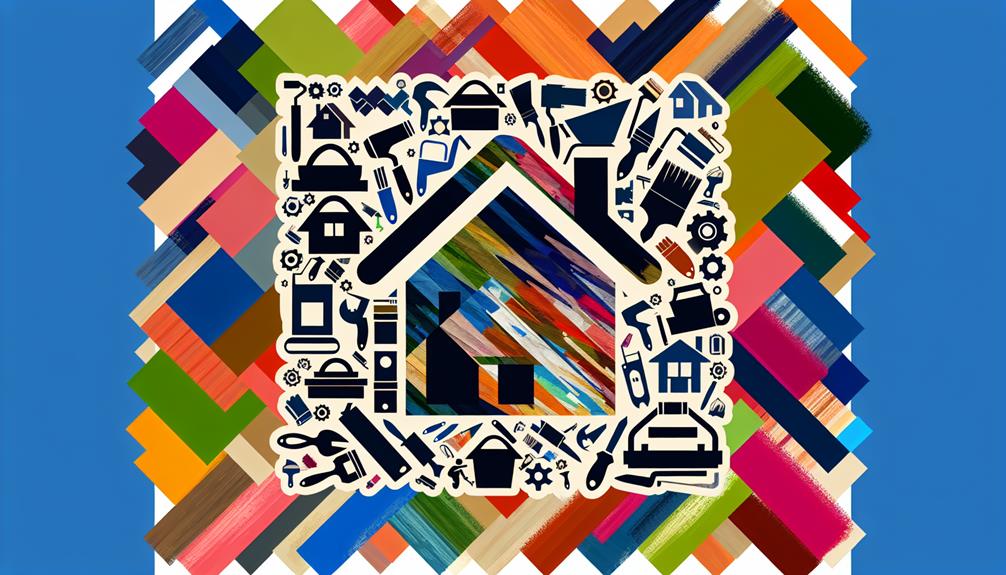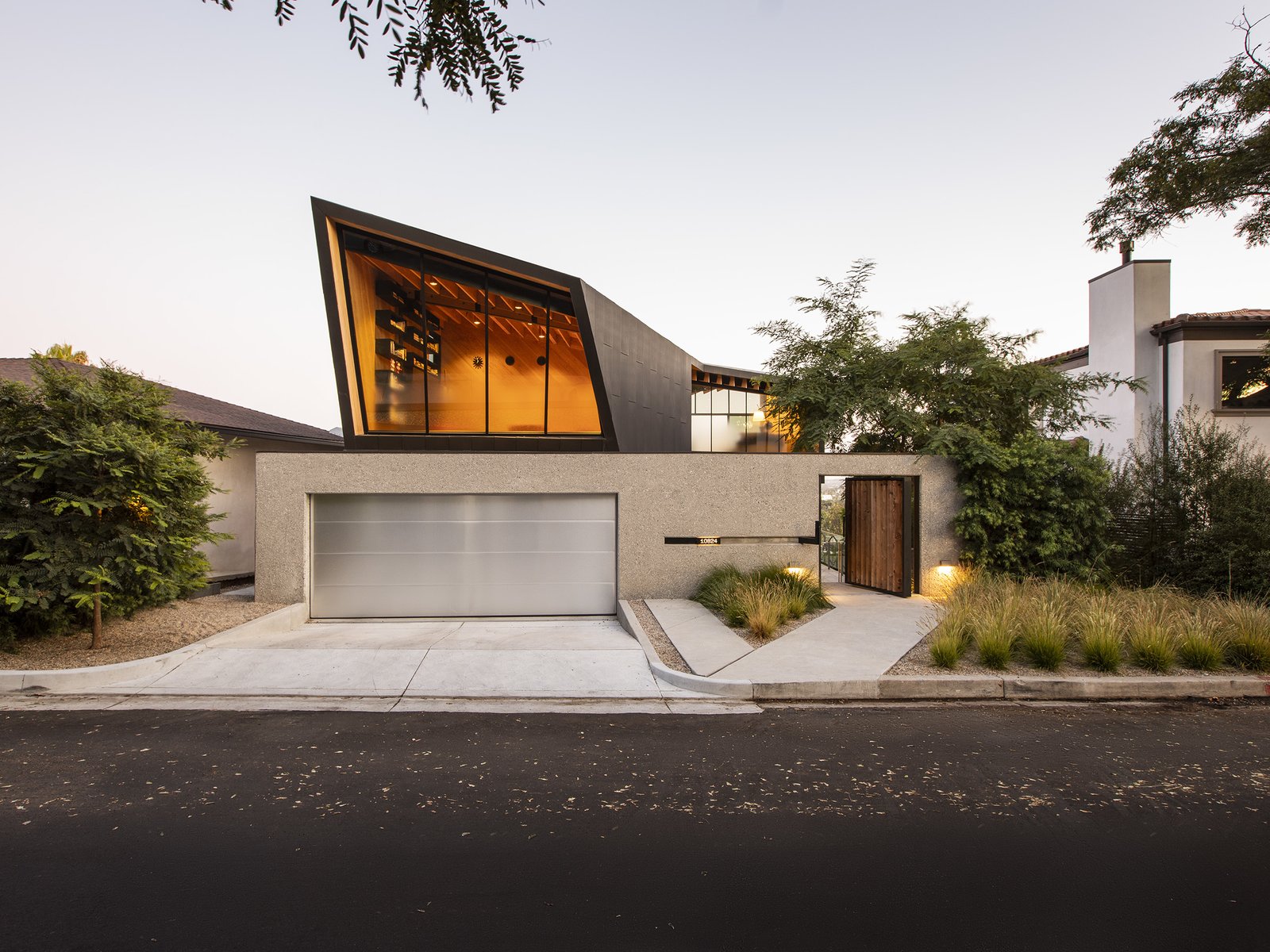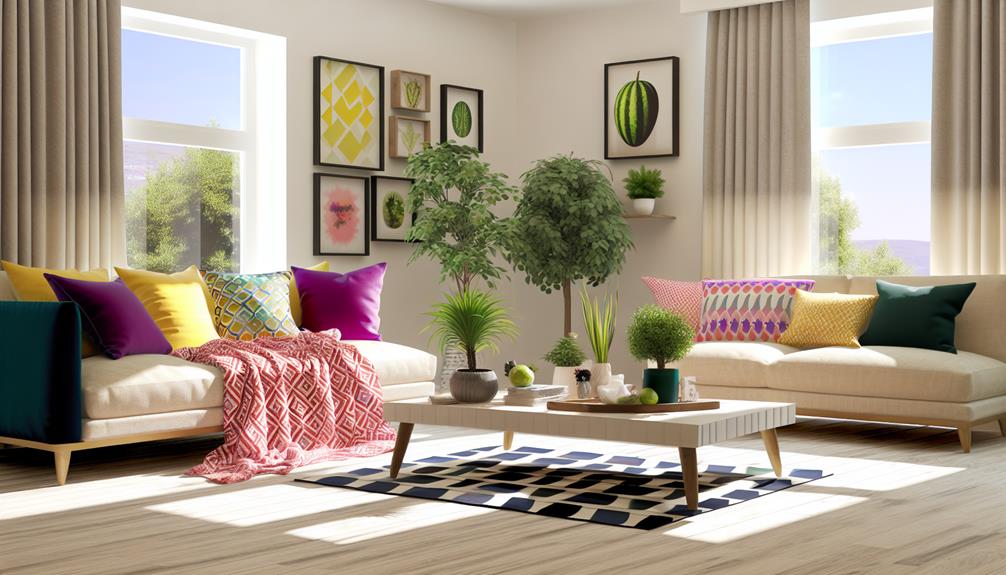When seeking creative home improvement logo inspiration, focus on elements that encapsulate your brand's essence. A memorable logo combines simplicity and unique iconography, such as tools or home symbols, to foster emotional connections. Color schemes play a pivotal role; warm tones evoke energy, while cool hues instill trust. Typography should be bold and easily identifiable, enhancing recognition. Consider successful examples, like Home Depot's vibrant orange or Lowe's clean blue, as benchmarks. These strategies can elevate your branding efforts, ensuring your logo resonates with consumers. Explore further to uncover more insights that can elevate your next project.
Key Takeaways
- Explore minimalist designs for a modern appeal that fosters clarity and recognition in home improvement branding.
- Incorporate warm color schemes like reds and oranges to evoke energy and creativity in renovation-focused logos.
- Utilize relevant iconography, such as tools or houses, to visually communicate trust and craftsmanship in your logo.
- Consider unique typography that conveys strength and reliability while enhancing overall brand identity and impact.
- Draw inspiration from successful brands like Home Depot and IKEA, analyzing their color choices and emotional connections to customers.
Importance of a Strong Logo
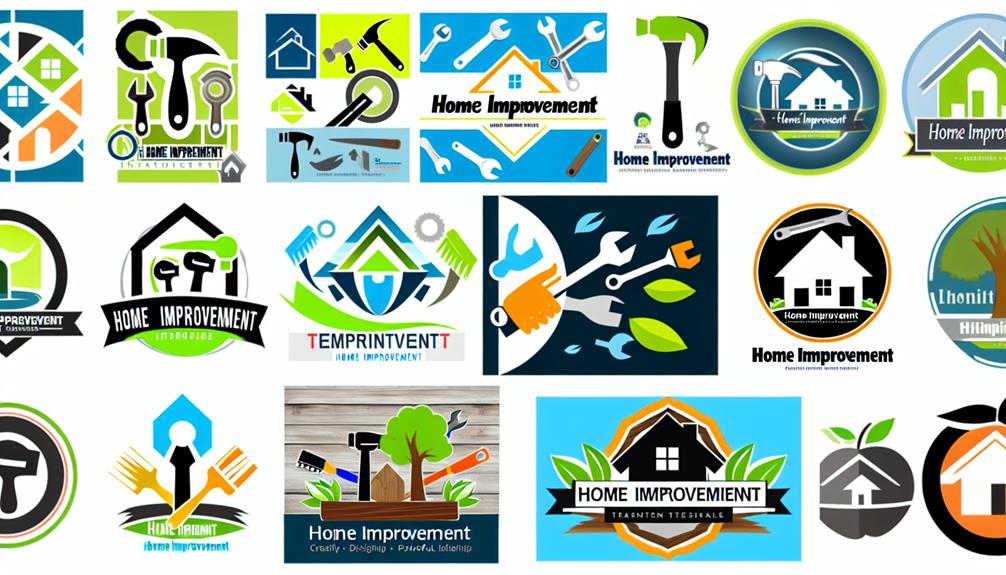
A logo serves as the visual cornerstone of a brand, acting as the first impression that potential customers encounter. In the competitive home improvement industry, a strong logo is essential for a cohesive branding strategy, as it encapsulates the essence of the business while fostering trust and recognition. Additionally, establishing a reputable image can be particularly important for businesses facing challenges, such as those seeking merchant accounts for businesses with bad credit. Logo versatility plays a pivotal role, ensuring that the design remains effective across various platforms—be it on a business card, website, or vehicle wrap. A well-crafted logo not only distinguishes a company from its competitors but also evokes a sense of belonging among customers who identify with its visual identity. By investing in a memorable logo, businesses can create lasting connections, encouraging loyalty and engagement in a community that values quality and innovation.
Elements of Effective Logo Design
Successful logo design incorporates several key elements that contribute to its effectiveness and memorability. First, simplicity is paramount; a clean and uncluttered design fosters instant recognition. Additionally, understanding the nuances of high-risk merchant accounts can inspire innovative design choices that cater to specific audiences. Second, versatility guarantees that your logo performs well across various mediums, from business cards to billboards. Third, a strong connection to logo design principles, such as balance and proportion, enhances visual appeal. Moreover, effective logos resonate emotionally, aligning seamlessly with brand identity. This alignment invites customers to feel a sense of belonging, reinforcing their loyalty and connection to your brand. Finally, originality sets your logo apart from competitors, ensuring it remains impactful and memorable. By weaving these elements together, you create a logo that truly embodies your brand's essence and values.
Color Schemes for Home Improvement Logos
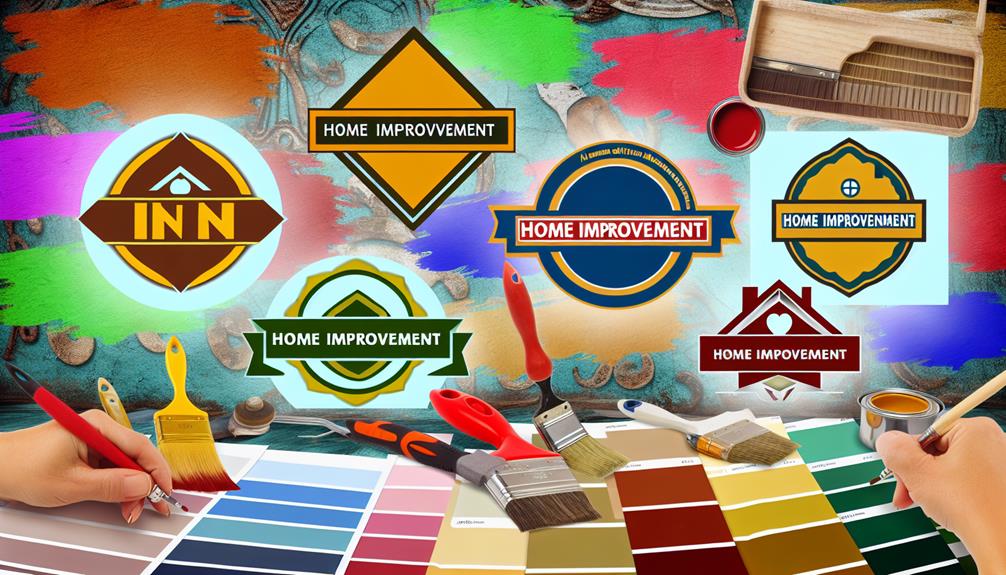
Color selection plays a pivotal role in the branding of home improvement businesses, as it directly influences customer perception and emotional response. Understanding color psychology is essential in crafting a compelling brand identity that resonates with your target audience. Warm tones like reds and oranges evoke energy and enthusiasm, ideal for brands promoting renovation and design. Additionally, remote customer service can enhance the customer experience by providing timely support and solutions, exploring the benefits of which can greatly impact customer loyalty. In contrast, cool hues such as blues and greens instill a sense of calm and trust, perfect for organizations focused on reliability and quality. Earthy tones can reflect sustainability and a connection to nature, appealing to eco-conscious consumers. By thoughtfully combining these colors, home improvement logos can create a visual narrative that not only attracts attention but also fosters a sense of belonging and community among customers.
Typography Choices That Stand Out
Typography plays an essential role in establishing brand identity within the home improvement sector, where bold font selections can convey strength and reliability. Additionally, incorporating unique typographic elements can help differentiate a brand in a competitive market, especially in industries like payment processing where navigating high-risk solutions is key. In contrast, playful lettering styles can infuse a sense of creativity and approachability, appealing to a broader audience. By thoughtfully combining these elements, logos can achieve a mesmerizing visual impact that resonates with potential customers.
Bold Font Selections
When commencing on a home improvement project, the impact of bold font selections cannot be underestimated. Choosing the right typography is essential for creating a memorable logo that resonates with your audience. Bold contrasts enhance readability and visual appeal, while strategic font pairing can elevate your brand's identity. Consider the following elements:
- Serif vs. Sans-serif: Combine classic and modern fonts for a timeless look.
- Weight Variations: Utilize different font weights to create hierarchy and focus.
- Color Choices: Pair bold fonts with striking colors for maximum impact.
- Spacing: Adequate letter and line spacing can enhance clarity and sophistication.
These considerations not only captivate your audience but also foster a sense of belonging within the home improvement community.
Playful Lettering Styles
While the essence of a brand often lies in its boldness, incorporating playful lettering styles can inject a sense of creativity and whimsy into home improvement logos. Whimsical fonts, with their curvy lines and unexpected flourishes, can evoke a friendly and inviting atmosphere, appealing to clients seeking a personal touch in their projects. By blending these playful elements with modern aesthetics, brands can create a memorable visual identity that resonates deeply with their audience. Consider using rounded characters and vibrant colors to enhance the charm of your logo. This approach not only fosters a sense of belonging but also sets your brand apart in a competitive market, inviting potential customers to engage with your unique and friendly vision.
Iconography and Symbolism in Logos
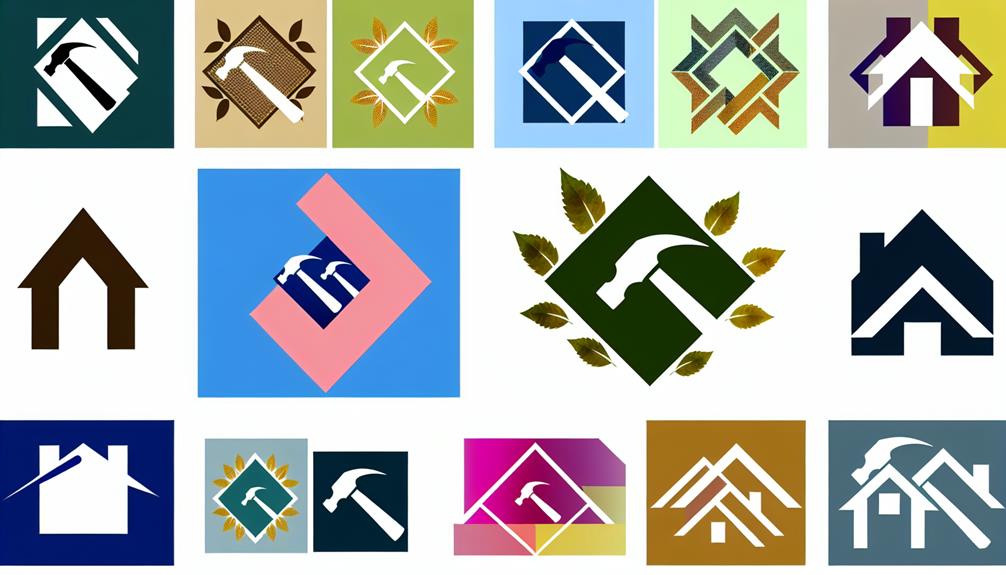
In the domain of home improvement logos, the selection of icons can transform a brand's message into a visual narrative that resonates with consumers. Each symbol, whether it be a hammer, house, or tool, carries intrinsic meaning that can evoke trust, reliability, and craftsmanship. Furthermore, businesses operating in sectors like home improvement may need to contemplate navigating high-risk merchant accounts to guarantee seamless payment processing. Additionally, the strategic use of color enhances these icons, infusing them with emotional significance that captivates potential clients and reinforces brand identity.
Meaningful Icon Choices
A thoughtfully designed logo serves as a powerful visual representation of a brand's identity, and the choice of icons plays a pivotal role in conveying its message. Implementing effective icon selection strategies can enhance your visual branding elements and foster a sense of belonging among your audience. Consider these key factors when choosing icons:
- Relevance: Select symbols that directly relate to your services and resonate with your target market.
- Simplicity: Opt for clean, uncomplicated designs that are easily recognizable and memorable.
- Uniqueness: Aim for distinctive icons that set your brand apart from competitors.
- Emotional Connection: Choose imagery that evokes positive feelings, helping to forge a deeper bond with your customers.
These strategies align your logo with your brand's vision, enhancing its overall impact.
Color Symbolism Importance
Color plays an essential role in logo design, serving as a powerful tool for conveying a brand's message and evoking specific emotions. Understanding color psychology is vital for home improvement logos, as different hues can greatly influence brand perception. For instance, earthy tones like greens and browns evoke feelings of stability and growth, making them ideal for brands focused on sustainability. Bright colors, such as yellows and oranges, can inspire energy and creativity, appealing to a more vibrant audience. By thoughtfully integrating colors that resonate with target demographics, brands foster a sense of belonging and connection. Ultimately, the right color choices not only enhance aesthetic appeal but also reinforce brand identity and loyalty, making them indispensable in logo design.
Case Studies of Successful Logos
Successful logos serve as powerful visual anchors for brands, capturing their essence in a single, memorable image. Examining the logo evolution of successful home improvement brands reveals effective branding strategies that resonate with their audience. Here are four notable case studies:
- Home Depot: The iconic orange logo conveys energy and accessibility, fostering customer loyalty.
- IKEA: The blue and yellow emblem symbolizes innovation and affordability, establishing a welcoming environment for all.
- Lowe's: Their clean, bold design represents reliability and quality, enhancing brand recognition.
- Ace Hardware: The classic red logo evokes a sense of community, reinforcing the brand's local presence.
These logos not only reflect their branding strategies but also create an emotional connection, inviting customers into their unique worlds.
Frequently Asked Questions
How Do I Choose a Logo Designer for My Project?
Choosing the right logo designer is essential for establishing your brand identity. Begin by reviewing their portfolio to assess their logo design styles and guarantee they resonate with your vision. Look for a designer who prioritizes branding consistency, making sure that your logo aligns with your overall aesthetic and messaging. Engage in discussions about their creative process, as an innovative, visual-focused approach is fundamental for capturing the essence of your project and fostering a sense of belonging.
What File Formats Should I Request for My Logo?
When selecting file formats for your logo, prioritize vector graphics, such as .AI or .EPS, as they guarantee logo scalability without loss of quality. Additionally, request raster formats like .PNG and .JPEG for versatile use across digital platforms. These formats empower you to maintain a consistent brand identity, whether displayed on a business card or a billboard. By securing diverse formats, you foster a sense of belonging for your brand within the marketplace.
Can I Update My Logo Later if Needed?
Yes, you can update your logo later if needed. Embracing logo evolution is essential for adapting to changing market dynamics while maintaining brand consistency. As your business grows, visual elements may require refinement to better resonate with your audience. An innovative approach to logo design allows for subtle adjustments that enhance recognition and connection. Prioritizing detail guarantees that the updated logo reflects your brand's identity, fostering a sense of belonging among your customers.
How Much Should I Budget for Logo Design?
When budgeting for logo design, it's crucial to take into account various factors influencing logo design costs. A well-defined budget planning strategy typically ranges from $300 to $5,000, depending on the complexity and designer expertise. Allocate funds for professional services to guarantee a unique and impactful logo that resonates with your target audience. Investing thoughtfully in this aspect fosters a sense of belonging and elevates your brand's identity in a competitive marketplace.
What Are Common Mistakes to Avoid When Designing a Logo?
When designing a logo, avoiding common pitfalls is essential. First, consider color psychology; colors evoke emotions and should align with your brand's message. Additionally, typography choices must reflect your brand's personality while ensuring readability. Simplicity matters—overly complex designs can confuse audiences and dilute brand recognition. Finally, maintain brand consistency across all platforms to foster a sense of belonging among your audience, reinforcing their connection to your brand's identity.

